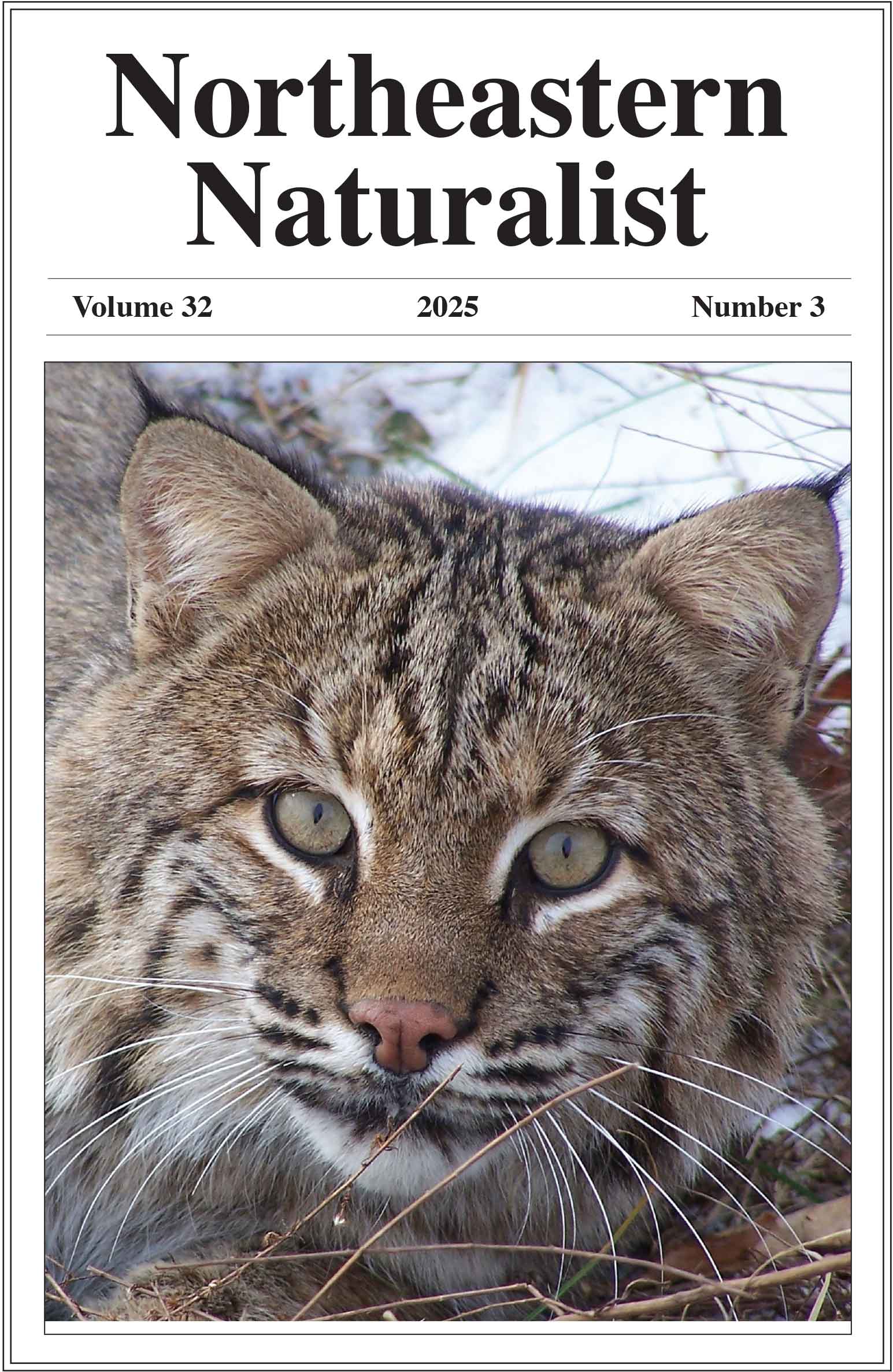Bryophytes at the Western Limits of Canada’s Great Lakes Forest: Floristic Patterns and Conservation Implications
Richard T. Caners*
*Royal Alberta Museum, 9810 103A Avenue, Edmonton, Alberta, T5J 0G2, Canada, and Department of Renewable Resources, University of Alberta, 751 General Services Building, Edmonton, Alberta, T6G 2H1, Canada.
Northeastern Naturalist, Volume 27, Monograph 17 (2020): 1–37
Abstract
The Great Lakes–St. Lawrence Forest Region in Canada occupies a narrow band of mixed forest from the Gaspé Peninsula to southeastern Manitoba. The westernmost extent of this forest region in Manitoba is expected to support at least some of the bryophyte species that occur further east within the climatic and vegetation boundaries of the region. However, very few bryophytes have been reported from this area in Manitoba either in the scientific literature or herbaria, necessitating further investigation. This study provides the first assessment of bryophytes from mixed forests and treed swamps within the Great Lakes forest in Manitoba and relates them to physiography and habitat, including the first documented bryophytes for Buffalo Point First Nation on Lake of the Woods. Reported here are 153 bryophyte taxa, including 40 liverworts from 29 genera in 23 families, and 113 mosses from 77 genera in 31 families. Among these, 27 bryophytes (9 liverworts and 18 mosses) are new to Manitoba, and an additional 7 bryophytes (1 liverwort and 6 mosses) that previously had incomplete information or were equivocal are now confirmed for Manitoba. These findings expand substantially the provincial bryophyte flora. A further 35 bryophytes are re-discovered for Manitoba after more than 40 years since they were last reported in the literature. The surveyed flora is characterized as predominantly boreal (61.7% of taxa) in terms of world phytogeographic distributions. However, more than one quarter of taxa (27.9%) are temperate and frequently associated with habitats containing Fraxinus nigra (Black Ash) or Fraxinus pennsylvanica (Green Ash) trees. Many of the temperate taxa reported have widespread distributions in eastern North America but approach their western and/or northern distribution limits in the study area. Herein I identify bryophytes of high conservation value for Great Lakes forest in Manitoba using nested subsets of taxa. Additional documentation of bryophytes in the area is needed to help inform the conservation and management of lands that support a high diversity of Great Lakes-associated bryophytes.
![]() Download Full-text pdf (Accessible only to subscribers. To subscribe click here.)
Download Full-text pdf (Accessible only to subscribers. To subscribe click here.)
Access Journal Content
Open access browsing of table of contents and abstract pages. Full text pdfs available for download for subscribers.
Issue-in-Progress: Vol. 32(4) ... early view
Check out NENA's latest monograph and Special Issue:













 The Northeastern Naturalist is a peer-reviewed journal that covers all aspects of natural history within northeastern North America. We welcome research articles, summary review papers, and observational notes.
The Northeastern Naturalist is a peer-reviewed journal that covers all aspects of natural history within northeastern North America. We welcome research articles, summary review papers, and observational notes.